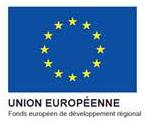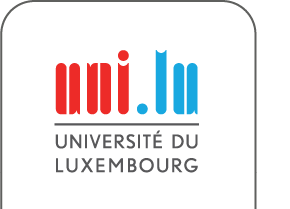Digital Twin – A Multi-scale Technology for Innovative Material Processing
People
- Principal Investigator: Prof.-Dr.-Ing. B. Peters
Funding

|
This research is in the framework of the project "DigitalTwin", supported by the programme: Investissement pour la competitivite et emploi - European Regional Development Fund (Grant agreement: 2016-01-002-06). |
Summary
The digital twin technology is a young but nevertheless accelerating technology as an integral part of rapid product development and prototyping and starts being applied in many industries. It enables engineers to communicate easier design vision to team members, manufacturers and prospective clients. But despite many benefits, efficient multi-physics software frameworks to promote digital twin technology are still in its infancy. Therefore, the current project developed a multi-physics digital twin technology for application in the thermal processing industry namely the steel making and powder processing industry. The former refers to a digital twin of a blast furnace to produce steel, whereas the latter dealt with reduction of tungsten oxide to produce raw material for the hard metal industry. An analysis of the predicted results highlights the following advantages of digital twin technology:
- A deep and thorough analysis of results unveils the underlying physics of processes that were so far hidden due to more than difficult access or inaccessibility for measurements
- Digital twins allow “what-if”-scenarios i.e. to investigate the effect of change of a single parameter that in experiments is often not feasible
- Promote an improved layout and operation of respective devices
- Improved products contribute to less energy consumption, reduced carbon foot print, less greenhouse gases, efficient use of raw material and thus, to an increased well-being of the society
But despite its numerous benefits, the digital twin technology may still be prohibitively expensive and time consuming, in particular when the influence of multiple parameters is needed. Thus, this tool may be still too slow and costly for the demands of today’s competitive markets. In order to be relevant to a wide- spread domain of industrial applications, the technology must become cheaper and faster which is currently addressed in preparing an H2020 proposal coordinated by Prof Peters, University of Luxembourg.

Evolution of iron saturation during melting in the cohesive zone.
Related Research Topics
Digital Twin Technology
High Performace Computing (HPC)
- LSDEM: Large Scale simulations of DEM
- Parallelization of CFD-DEM Coupling
- Dual-Grid Multiscale Approach to CFD-DEM couplings
Publications
Articles in peer-reviewed journals
- E. Copertaro, A. A. E. Donoso, B. Peters, A comparison between discrete analysis and a multiphase approach for predicting heat conduction in packed beds, Proceedings of the 10 th International Conference on Computer Modeling and Simulation (ICCMS), 8-10 January 2018, Sydney (AU).
- E. Copertaro, P. Chiariotti, A. A. E. Donoso, N. Paone, B. Peters, G. M. Revel, A discrete-continuous method for predicting thermo-chemical conversion of the material bed in cement kilns, in press (Engineering Journal)
- M. Baniasadi, B. Peters, Resolving Multiphase Flow through Packed Bed of Solid Particles Using eXtended Discrete Element Method with Porosity Calculation, Industrial & Engineering Chemistry Research, 56-41 (2017), 25-48. DOI: 10.1021/acs.iecr.7b02903.
- M. Baniasadi, B. Peters, Preliminary Investigation on the Capability of eXtended Discrete Element Method for Treating the Dripping Zone of a Blast Furnace, ISIJ international, 58 (2018), 25-48.
- M. Baniasadi, M. Baniasadi, B. Peters, X. Besseron, Hydrodynamic analysis of Gas-Liquid-Liquid-Solid reactors using the XDEM numerical approach, accepted for publication in the Canadian Journal of Chemical Engineering, (2018).
- M. Baniasadi, M. Baniasadi, B. Peters, Coupled CFD-DEM with Heat and Mass transfer to Investigate the Melting of a Granular Packed Bed, Chemical Engineering Science, 178 (2018), DOI:10.1016/j.ces.2017.12.044.
- G. Pozzetti, B. Peters, A Multiscale DEM-VOF method for the simulation of three-phase flows, International Journal of Multiphase Flow 2018
- G. Pozzetti, B. Peters, A Numerical approach for the evaluation of particle-induced erosion in an Abrasive Waterjet focusing tube Powder Technology, 2018
- G. Pozzetti, B. Peters, A co-located partitions strategy for parallel CFD-DEM couplings, Advanced Powder Technology 2018 The XDEM Multi-physics and Multi-scale Simulation Technology: Review on DEM-CFD Coupling, Methodology and Engineering Applications Particuology, 2018
Conference proceedings
- M. Baniasadi, B. Peters, Softening and melting modeling of iron ore particles using a CFD-DEM coupling method, ICSTI 2018, Vienna.
- M. Baniasadi, M. Banisadi, B. Peters, Modelling of Laser Powder Bed Fusion Additive Manufacturing Using the eXtended Discrete Element Method (XDEM), 13th World Congress on Computational Mechanics, 2018.
- M. Baniasadi, M. Banisadi, B. Peters, Softening and melting modelling of iron ore pellets using a discrete - continuous coupling approach, ECCM 6- ECFD 7, Glasgow, 2018.
- M. Baniasadi, B. Peters, A CFD–DEM approach coupled with heat transfer for the melting process of a packed of particles, PARTICLES 2017, Hanover.
- M. Baniasadi, B. Peters, Investigating Multiphase Flow Behavior in Trickle Bed Reactors using eXtended Discrete Element Method (XDEM), 9th InterPore, Rotterdam, Netherlands, May 2017.
- M. Baniasadi, B. Peters, Model Study of Multiphase Flow through Packed Particles by eXtended Discrete Element Method (XDEM), Multiphase Flow, Tallin, Estonia, June 2017.
- M. Baniasadi, B. Peters, Multiphase Flow Behavior in Trickle Bed Reactors using eXtended Discrete Element Method (XDEM), GLS13, Brussels, Belgium, August 2017.
- M. Baniasadi, M. Baniasadi, B. Peters, A CFD–DEM approach coupled with heat transfer for the melting process of a packed of particles, PARTICLES, Hannover, Germany, November 2017.
- G. Pozzetti, B. Peters, Evaluating Erosion Patterns in an abrasive water jet cutting nozzle using XDEM, Powdermet2017 Las Vegas
- G. Pozzetti, B. Peters, LES-VOF simulations of a pure waterjet developing inside an AWJC nozzle: Preliminary observations and guidelines WJTA2017 New Orleans
- G. Pozzetti, B. Peters, Multiscale-Multiphysics approaches for engineering applications, ICNAAM2016
- G. Pozzetti, B. Peters, On the choice of a phase interchange strategy for a multiscale DEM-VOF method ICNAAM2016
- G. Pozzetti, B. Peters, Numerical Analysis of the fluid-dynamic interaction between Carrier Gas and Powder ECCOMAS AM Munich 2018
- G. Pozzetti, B. Peters, On the Performance of an overlapping-domaing parallelization strategy for Eulerian-Lagrangian Multiphysics software ICNAAM2017
- G. Pozzetti, B. Peters, A parallel multiscale DEM-VOF method for large-scale simulations of three-phase flows, ECCOMAS2018
Book chapter
- The eXtented Discrete Element Method (XDEM): An Advanced Approach to Model Blast Fur - nace, ISBN 978-953-51-5824-0.
Book
- Why Do – Discrete Element Analysis?, B. Peters, A. E. Donoso, ISBN 978-1-910643-43-3
